
and a friend, Phyllis Faulkner, visited
Living History Farms
in Urbandale, Iowa
|
|
and a friend, Phyllis Faulkner, visited |
| May
29, 2012 |
|
Living
History Farms in Urbandale, Iowa, tells the amazing story of how Iowans
transformed the fertile prairies of the Midwest into the most productive
farmland in the world. While at the 500-acre open-air museum, the two RV Gypsies walked at their own pace through five historical time periods spanning
300 years. On-site interpreters provided a unique learning environment
of seasonal activities and demonstrations. Living History Farms is an
interactive outdoor museum which educates, entertains and connects people
of all ages to Midwestern rural life experiences. 1900 Horse-Powered Farm
1875 Town of Walnut Hill
|
|
|
Below: The two RV Gypsies, Karen and Lee Duquette
at Living History Farms in Urbandale Iowa with their friend Phyllis Faulkner,
who lives nearby in Iowa. |
|
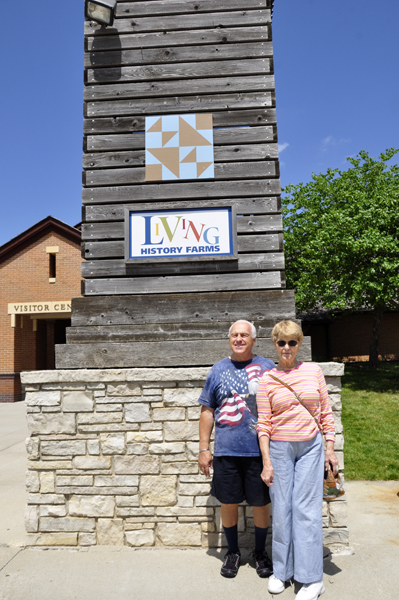 |
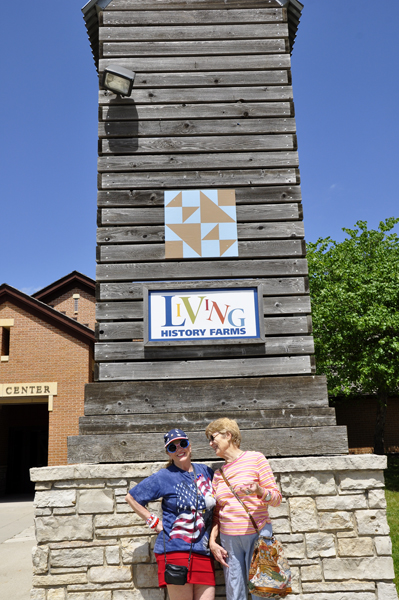 |
 |
|
|
Below: The two RV Gypsies had fun at Living
History Farms in Urbandale Iowa |
|
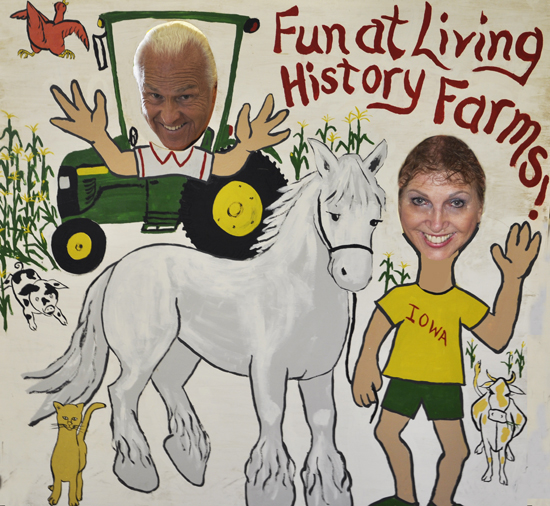 |
|
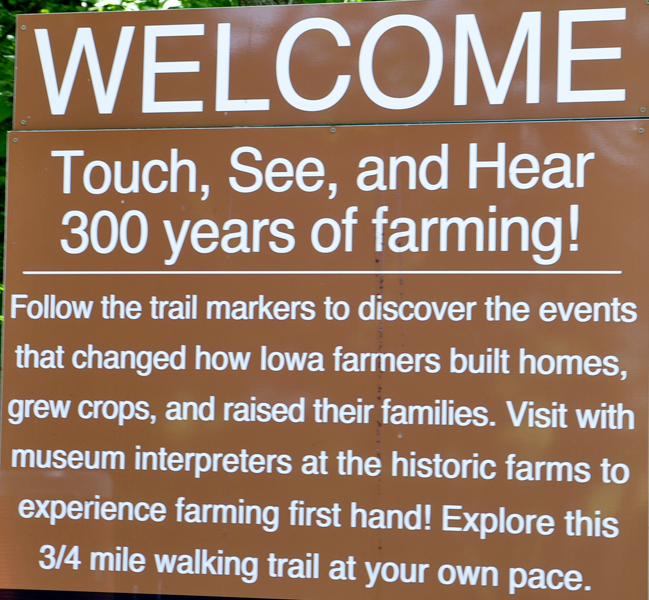 |
|
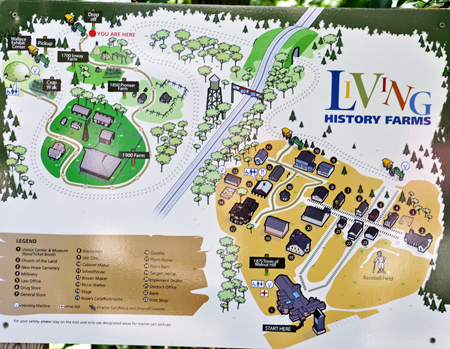 |
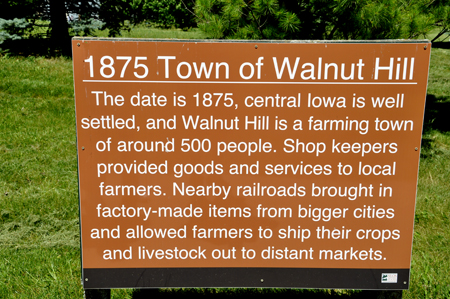 |
In Walnut Hill, several craftsmen have opened shops: Matthias' Blacksmith Shop, Beem's Broommaker, and Schuetzen's Cabinetmaker which also serves as the village undertaker through his role in the construction of wooden caskets. Greteman Brothers General Store is stocked with many reproductions of 1875 items and has a large inventory of small items for sale. The town also includes the Walnut Hill School, Dr. Armstrong's Office, Taylor's Law Office, Heck Vet Clinic, Walnut Hill Bank, The Advocate Newspaper, Mrs. Elliott's Millinery, Schafer Drug Store, The Church of the Land, New Hope Cemetery, Tangen Implement Warehouse and the Tangen Family Home. |
|
Inside
Walnut Hill Bank |
|
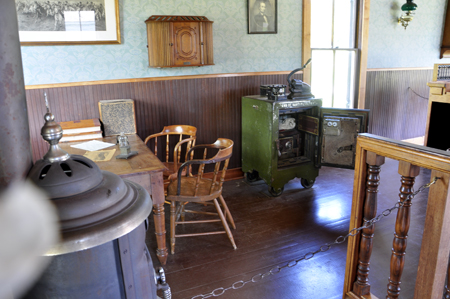 |
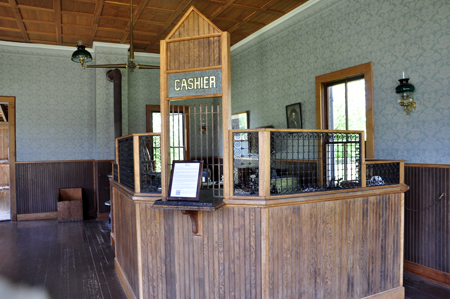 |
| Schafer
Drug Store |
An Old
desk |
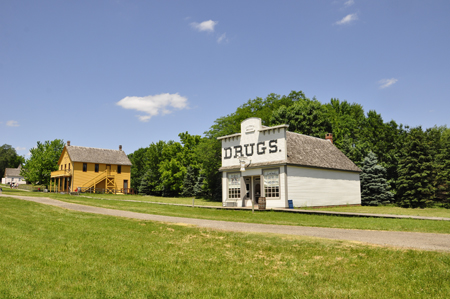 |
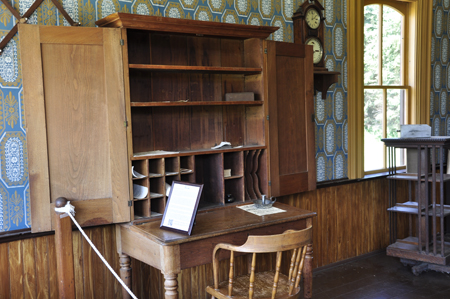 |
| Below: The Italianate Victorian Flynn House and adjoining Flynn Barn were built in 1870. Both structures are listed on the National Register of Historic Places. | |
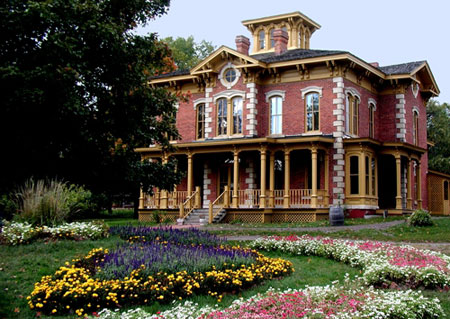 |
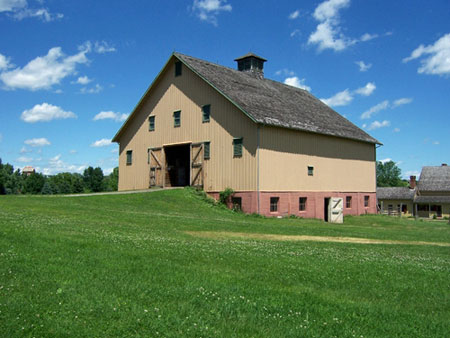 |
| Below Phyllis Faulkner and Lee approached Taylor's Law Office |
Below: The Church of the Land |
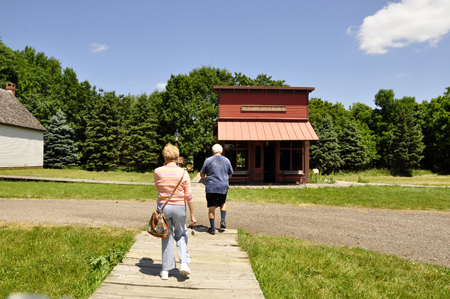 |
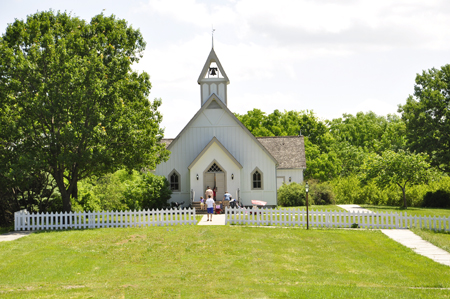 |
| Below: To get to other areas of Living History Farms, the two RV Gypsies and their friend Phyllis Faulkner got in a cart that was towed by a tractor, went under the main road, and got quite dusty. | |
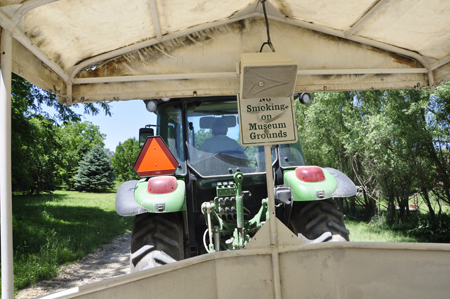 |
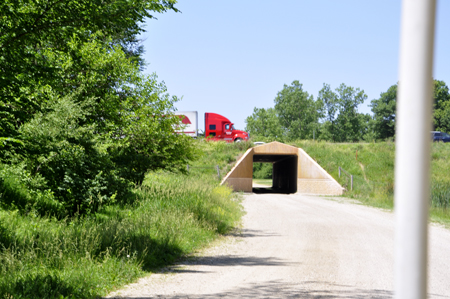 |
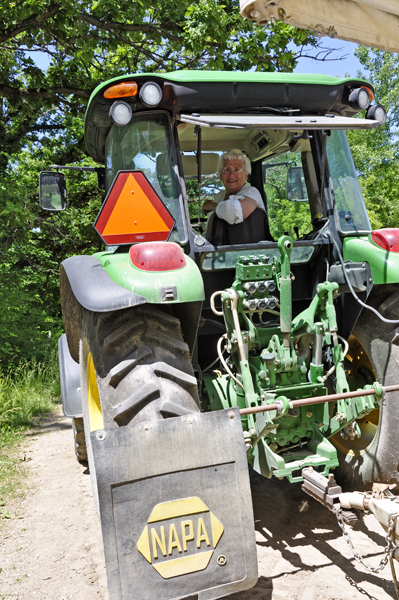 |
|
|
1700
Ioway Indian Farm |
|
 The
farming techniques practiced by the Ioway Indians in 1700 pre-dated written
history and varied somewhat from European methods. Ioway farmers raised
corn, beans and squash. Women did the farming in the Ioway culture while
men were responsible for hunting and making tools. Ioway families were subsistence
farmers, raising just enough for their family to survive throughout the
year and having a little put away in case of a bad year. The
farming techniques practiced by the Ioway Indians in 1700 pre-dated written
history and varied somewhat from European methods. Ioway farmers raised
corn, beans and squash. Women did the farming in the Ioway culture while
men were responsible for hunting and making tools. Ioway families were subsistence
farmers, raising just enough for their family to survive throughout the
year and having a little put away in case of a bad year.
Ioway Indians had separate summer, winter and traveling lodges. Bark houses called naacute hachi kept the Ioway cool during hot summer months, while winter mat-houses called chkirutha, made from layers of sewn cattail leaves, protected the Ioway from harsh winters and stayed around 50 degrees inside. While traveling on hunting expeditions, the Ioway lived in a chibthraje, or tipi made from buffalo hides. Their villages also contained sweat lodges, food-drying racks, cooking areas, work areas, hide-scraping racks, pottery pits, and gardens. |
|
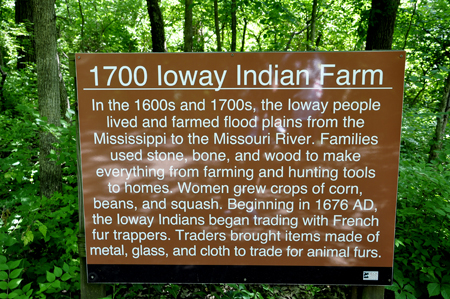 |
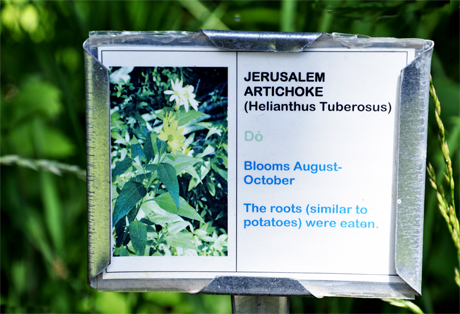 |
|
Below: This is where corn was hung to dry |
|
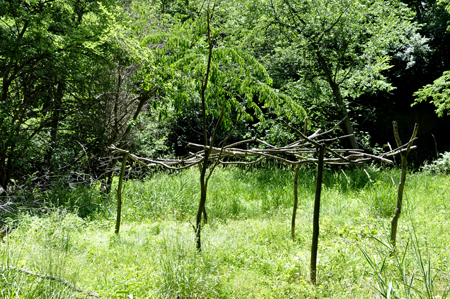 |
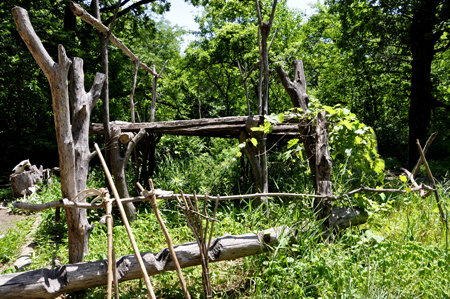 |
|
Below: Phyllis Faulkner and Lee Duquette checked out the Winter House at 1700 Ioway Indian Farm |
|
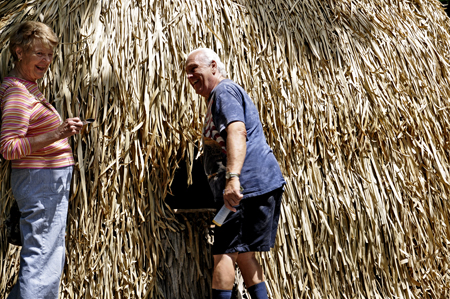 |
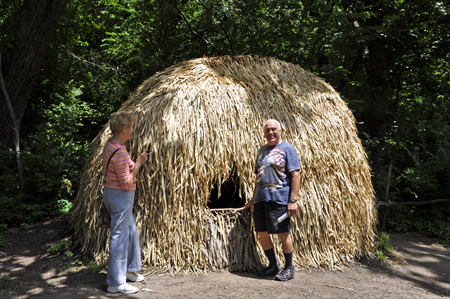 |
| Below: Lee Duquette peeked through the opening in the hut and Karen Duquette went around the side to photograph Lee peeking through the opening of the hut (what a perfect butt shot). | |
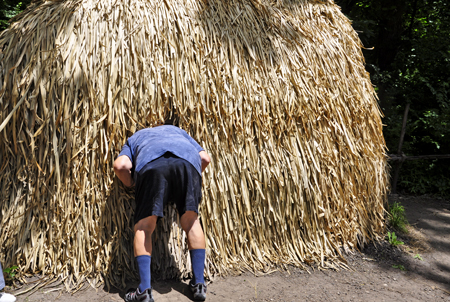  |
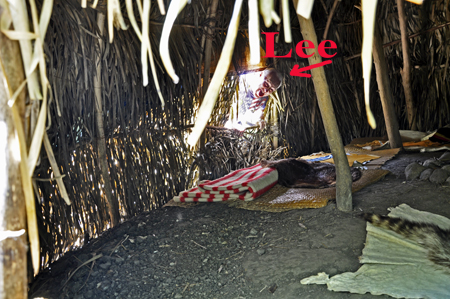 |
Below: The Outdoor
kitchen |
|
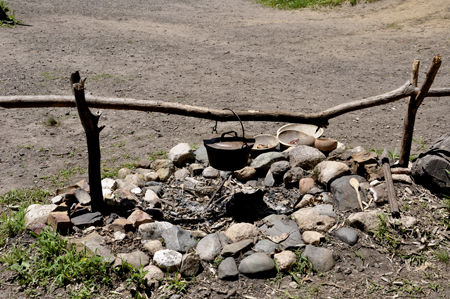 |
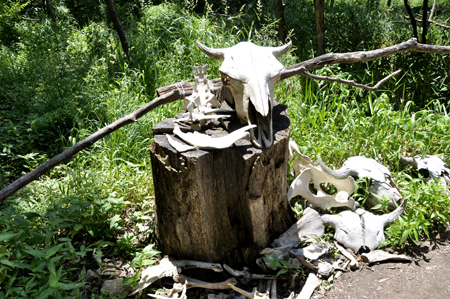 |
| Below:
Signs explaining the wild plants and their uses. |
|
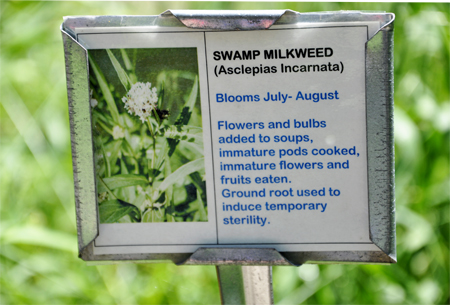 |
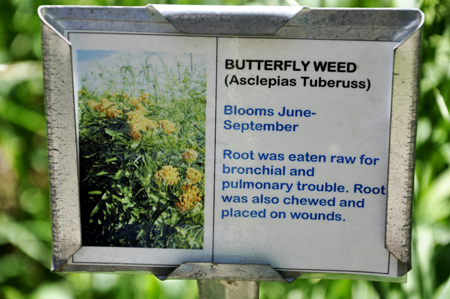 |
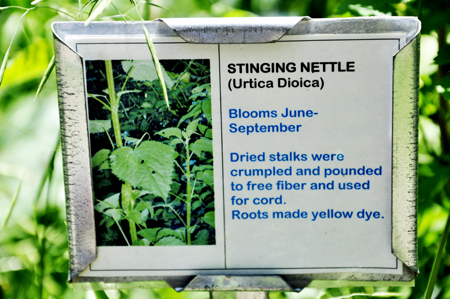 |
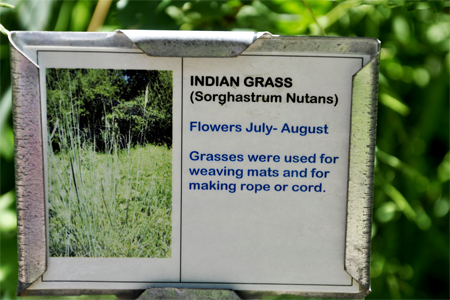 |
Below: The 1850
Pioneer Farm at Living History Farms |
|
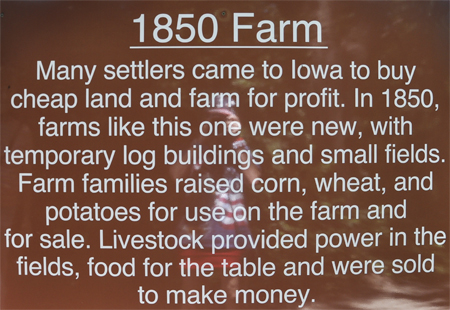 |
|
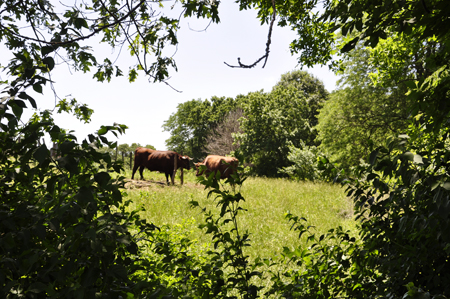 |
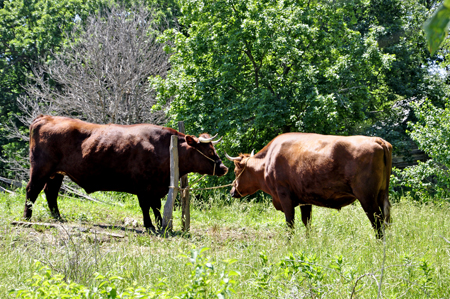 |
| Below: The split rail fence, wheat field, rooting pigs and log house represent a four-year-old farm, established when Iowa became a state in 1846. The farm site is in transition between subsistence agriculture (producing enough for the family to survive) and becoming a profit-making farm. Most farms in 1850 averaged 160 acres in size, with farmers cultivating anywhere from 25 to 40 acres. Corn, wheat and potatoes were the three major crops in 1850. Most farmers used their corn crop to feed the pigs that were then sold for profit. Wheat and hogs were cash crops for farmers, and potatoes were a staple with nearly every meal and lasted throughout the winter. | |
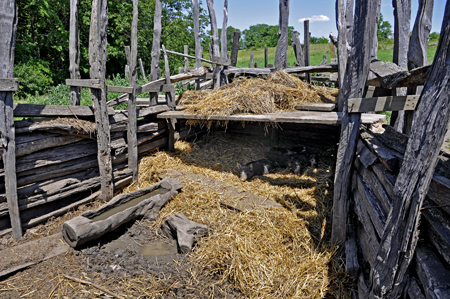 |
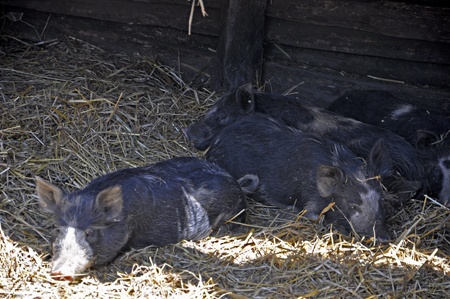 |
Below: Lee Duquette approached the |
Below: Wheat field at the 1850
Pioneer Farm |
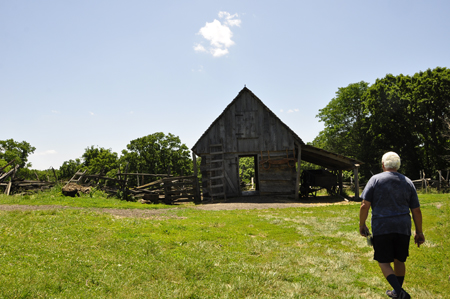 |
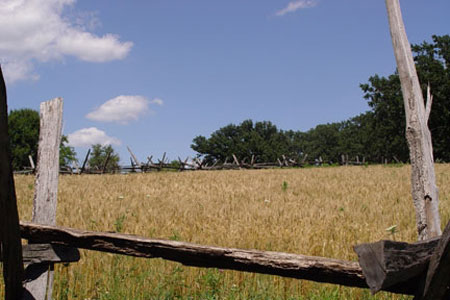 |
Below: Until pioneer families
earned enough money to purchase modern 1850 technology, they relied on
older farming methods. For example, women prepared food over an open fire
even though wood-burning cook stoves were available. The majority of people
who settled in Iowa in the 1840s and 1850s came from the Eastern United
States, and were eager to build a multi-room dwelling like they had lived
in before coming west. Log houses were temporary structures that the pioneers
improved or replaced once the farm was established.
|
|
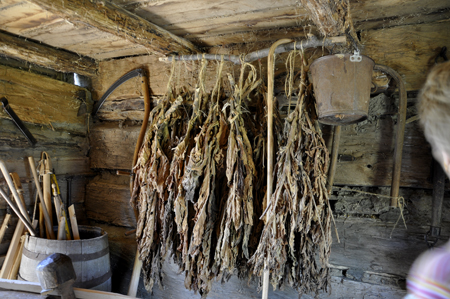 |
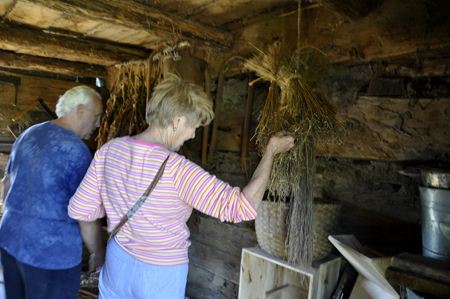 |
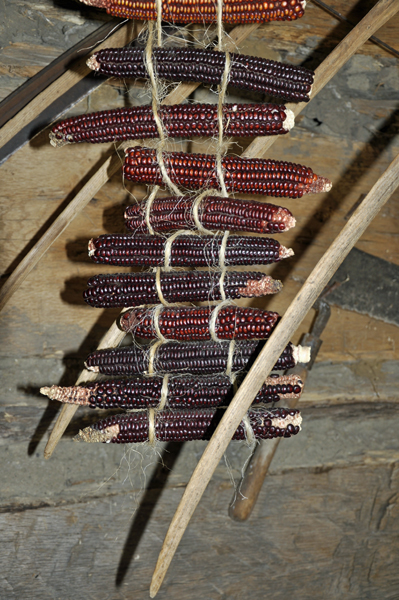 |
|
Below: Behind the 1850
Pioneer Farm log cabin
|
|
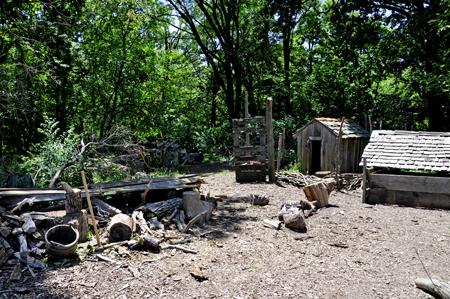 |
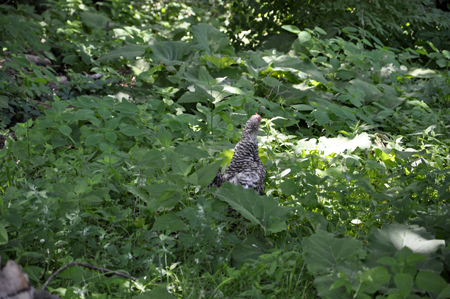 |
| Below: The two RV Gypsies and Phyllis Faulkner continued their journey on the Miller Nature Trail to reach the 1900 Farm at Living History Farms in Urbandale, Iowa | |
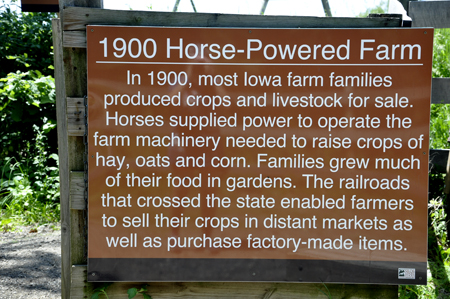 |
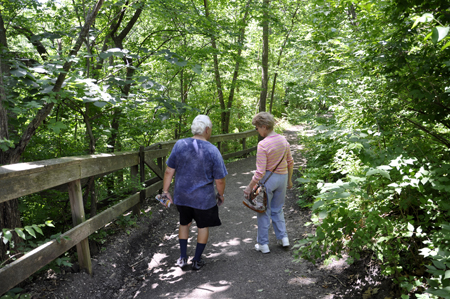 |
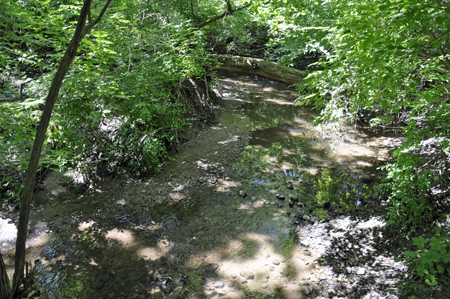 |
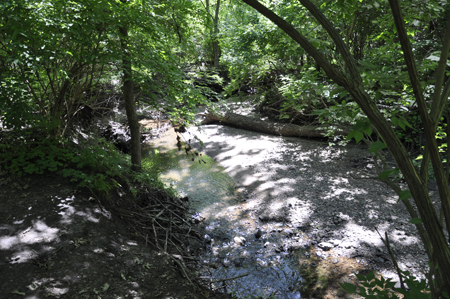 |
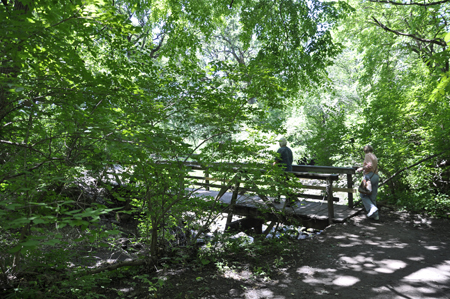 |
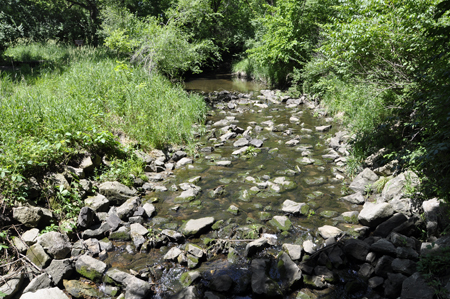 |
| Below: There were big trees along the Miller Nature Trail that captured the attention of the two RV Gypsies. The photos below only show part of the trees, of course. | |
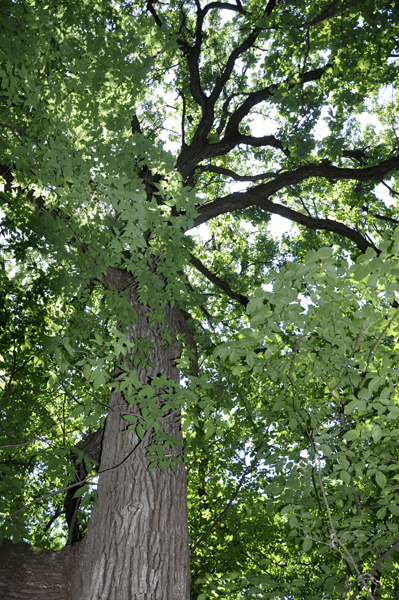 |
|
Below: Looking
up at a tree with its limbs flowing in many directions, forming a nice
pattern in the sky. |
Below: This
tree looks like a Halloween tree with spiny fingers |
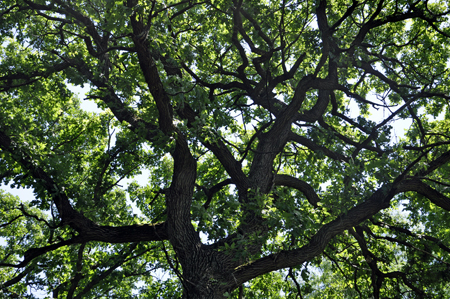 |
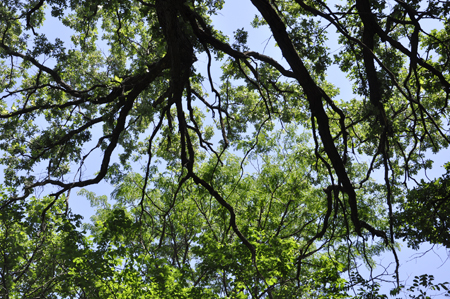 |
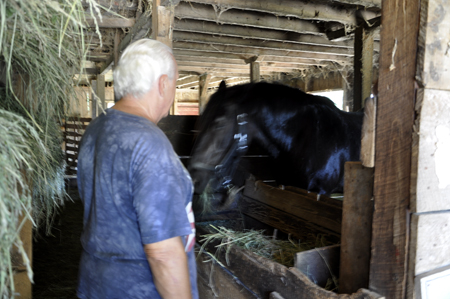 |
|
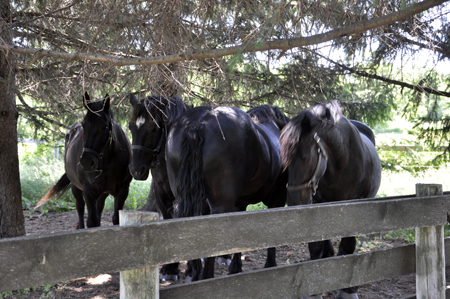 |
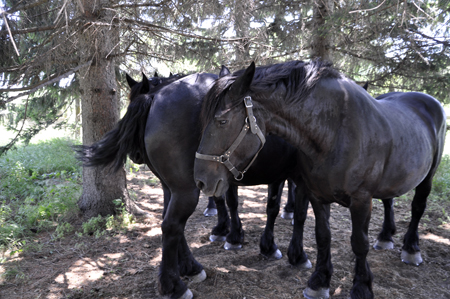 |
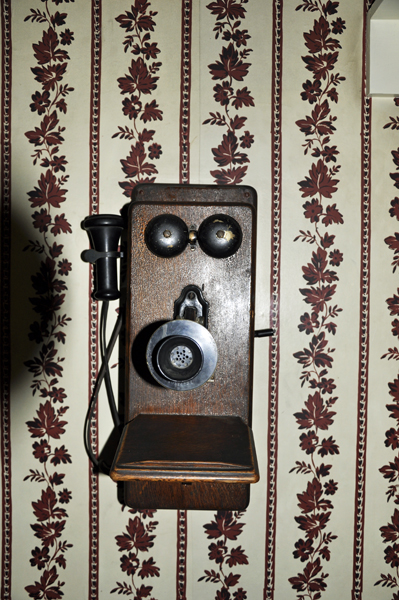 |
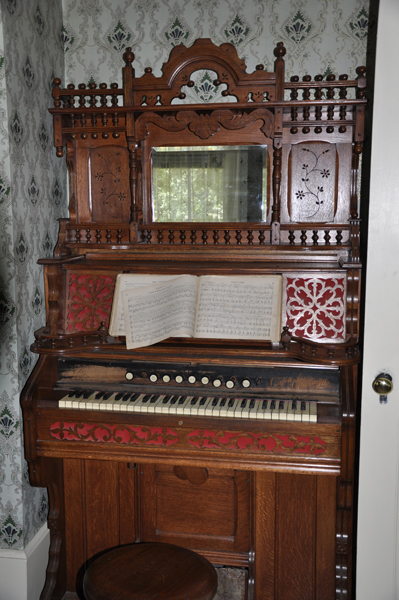 |
 What
the ?? Oh, it's Lee Duquette growing a FEATHER beard. What
the ?? Oh, it's Lee Duquette growing a FEATHER beard. |
|
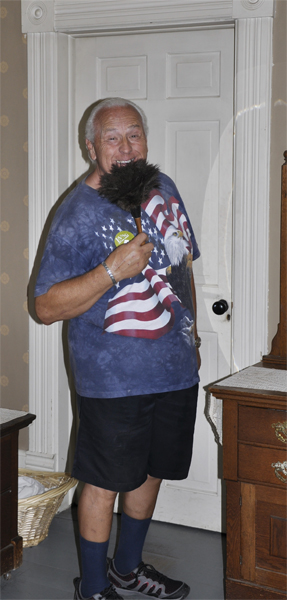 |
|
Below: The Convention Center,
offices, and meeting rooms available to rent |
Below: The Iowa State
Flag and the U.S.A. Flag |
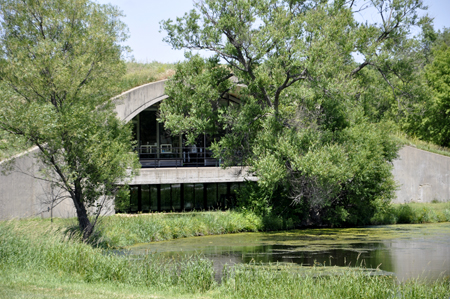 |
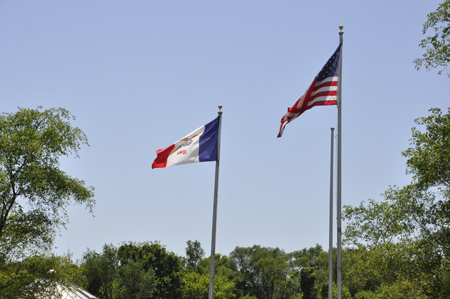 |
 Below:
Could this be the first version Below:
Could this be the first versionof our modern day ZIP LINES? |
Below: Lee Duquette wearing
one of the colonial hats |
|
|
|
|
|
 |
|
 |
|
 |
|
 |
|
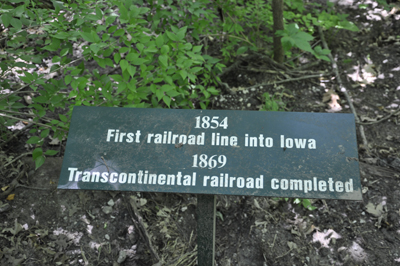 |
|
 |
|
 |
|
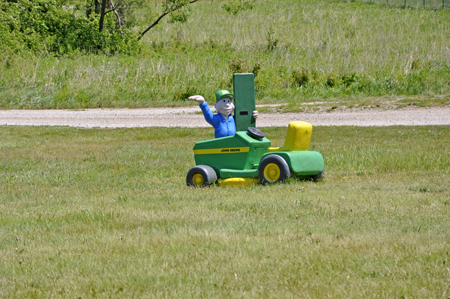 |
|
 The
two RV Gypsies and Phyllis Faulkner ate at the restaurant in front of Living
History Farms in Urbandale, Iowa, and were very pleased with the lunch served.
The server was polite, the food was plentiful, and the sandwiches were excellent. The
two RV Gypsies and Phyllis Faulkner ate at the restaurant in front of Living
History Farms in Urbandale, Iowa, and were very pleased with the lunch served.
The server was polite, the food was plentiful, and the sandwiches were excellent. |
|
 |
|
Below are more sections of the adventures of the two RV Gypsies in Iowa. You may view them in any order you wish. Be sure to scroll to the very bottom of every page for more navigational options. |
|
|
Living History Farms in Urbandale, Iowa
(this page) |
|
 |
|
|
ORContinue Navigation in any year, any place, in the order
of your choice |
|||||

|
|||||
 |
 |
 |
 |
 |
|
 |
 |
 |
 |
 |
|
 |
 |
 |
 |
 |
 |
 |
 |
 |
 |
 |
 |